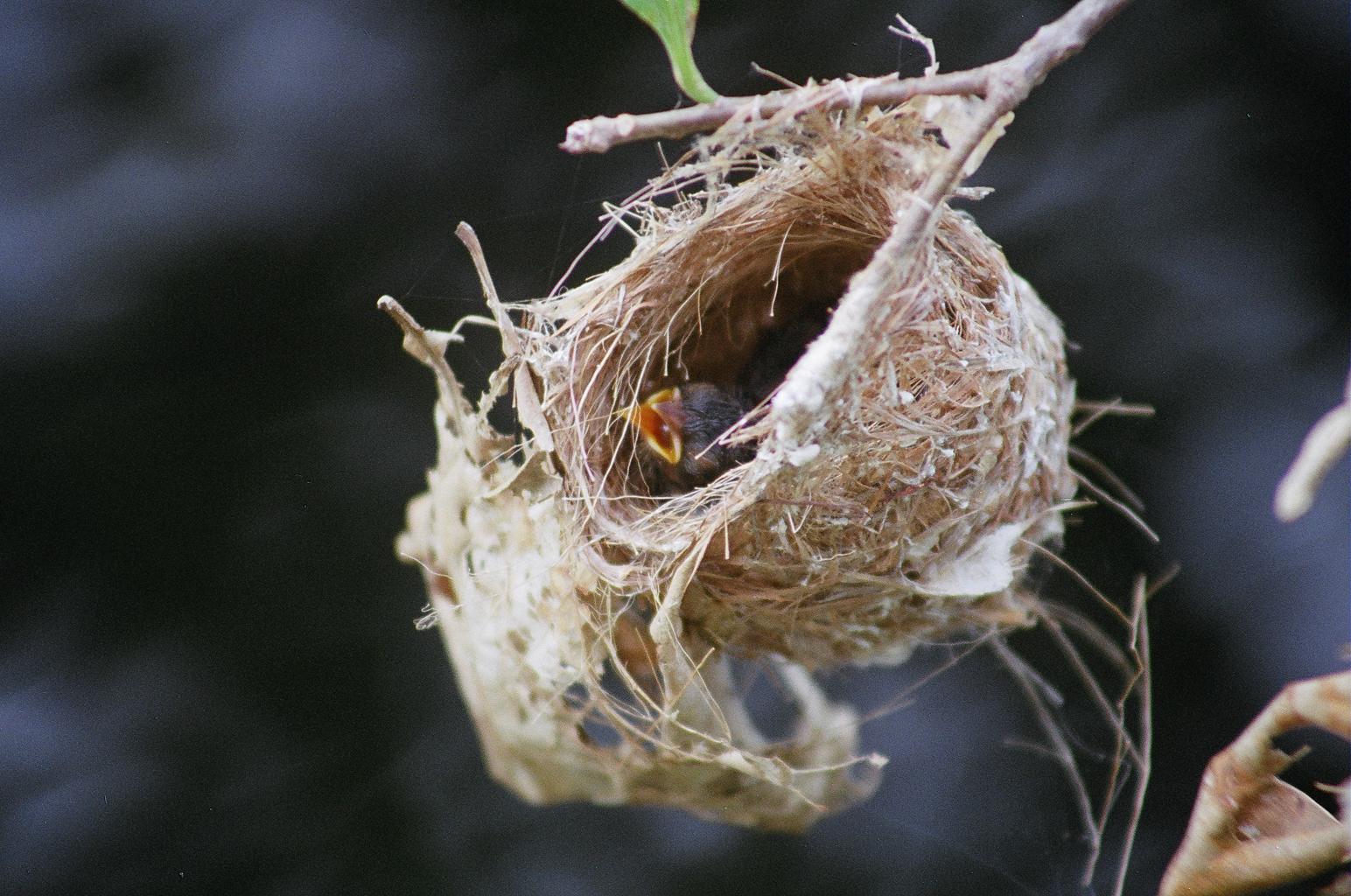
"How do different birds know how to build distinctive nests", queried a friend, "and how can you identify the nests of different species?"
Being addicted to the fine art of finding and identifying bird nests, I tried to answer.
Baby birds are born with individuality and a wild wisdom, a guidance factor known only to them and God. When they hatch they already know how to build a nest like the one in which they were born.
The birds of a given species follow a fairly consistent pattern in nest building although individuals sometimes depart from the general rule, both as to location and materials used in the nest's construction.
Cardinals build nests in our yard every year. Without fail the not-so-neat nests are made of small twigs, strips of paper, weed stems, rootlets and grasses. Fine grass and hair are used for the lining. The nest is from four to twelve feet from the ground in a bush, small tree, hedge or thick and thorny vines.
The yuppie wood thrush has two sets of house plans for the two different sites he usually chooses. His country home is placed in the crotch of a sapling, completely filling the crotch with leaves and paper. The outer depth of the nest can easily reach six inches. Dead leaves, weed stalks, rootlets and paper make up the foundation of the nest. It has some weight because of the compact mud or leaf mold inner wall. It is lined with thin rootlets.
Smaller, shallower and cup-shaped, the other style home is saddled on a large horizontal limb of an aged tree. It is cemented to the branch with mud. The same materials are used as in the country place but in lesser quantities.
We believe the same wood thrush built in the identical crotch of the same sapling in our yard for three years. The act of decorating the outside of the nest each year with a long flowing piece of toilet paper told us we had a hippie decorator in our midst, one who didn't cotton to the traditional decorating styles.
When you find a delicate and cleverly interwoven small cup-shaped nest of dainty grasses and tiny rootlets, lined with horse, cow or deer hair, the petite, rust-headed chipping sparrow is the builder.
To be such a chatterer, and so small, the Carolina wren defies his size with the large rough and sloppy nest he builds. It is lined with fine rootlets and hair. It is domed and has a side entrance.
Any old place will do for him to stick his nest, a hanging flower basket, a discarded coffee pot, a cluttered shelf, baskets, a door wreath, on the top of porch cabinets, underneath automobiles. Lean-tos and crannies seem to fascinate him more than bird boxes for nesting sites.
Of the three mimics, the mockingbird's nest is the smallest, the catbird's is in between, with the brown thrasher building the largest.
All three of these long-tailed birds make their nest foundation with sticks . . . the size stick reflecting who's building the nest. For the second layer of the foundation, the mockingbird and catbird use smaller sticks, but the brown thrasher's second layer is loads of dead leaves, then more small sticks with a lining of fine rootlets.
The catbird's lining is of fine rootlets and grapevine bark, paper and plastic. The mockingbird, after a foundation of small sticks, collects litter for his nest . . . leaves, grass, rags, string, hair, down, tree blossoms, paper, and feathers . . . and lines it with fine rootlets and soft hair.
The red-eyed vireos nesting in our yard always place the nest in a tree close to the end of the limb. They choose not a fork, but a sort of parallelogram (a small branch with two almost evenly spaced twigs protruding from it), and attach the nest to the three twigs.
Yet many of these birds have never selected a location or made a nest before. When the small blind, squiggly, pink animal is born there is within it a food preference, a migrating pattern, a nesting behavior, a distinctive set of marks and song, all waiting to begin that struggle known as survival.
But, with all that said, the best way to identify a bird's nest is to find the owner at home.
